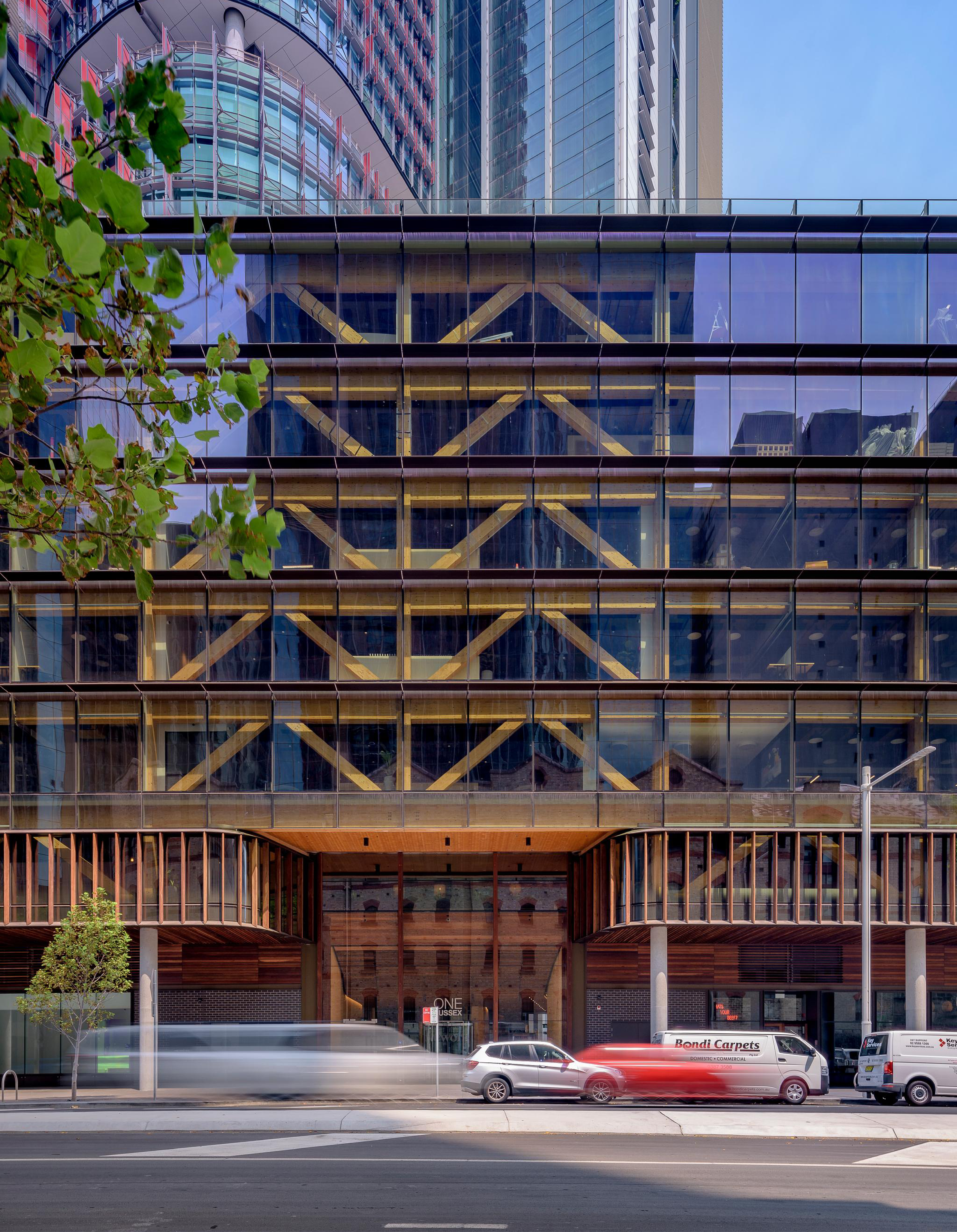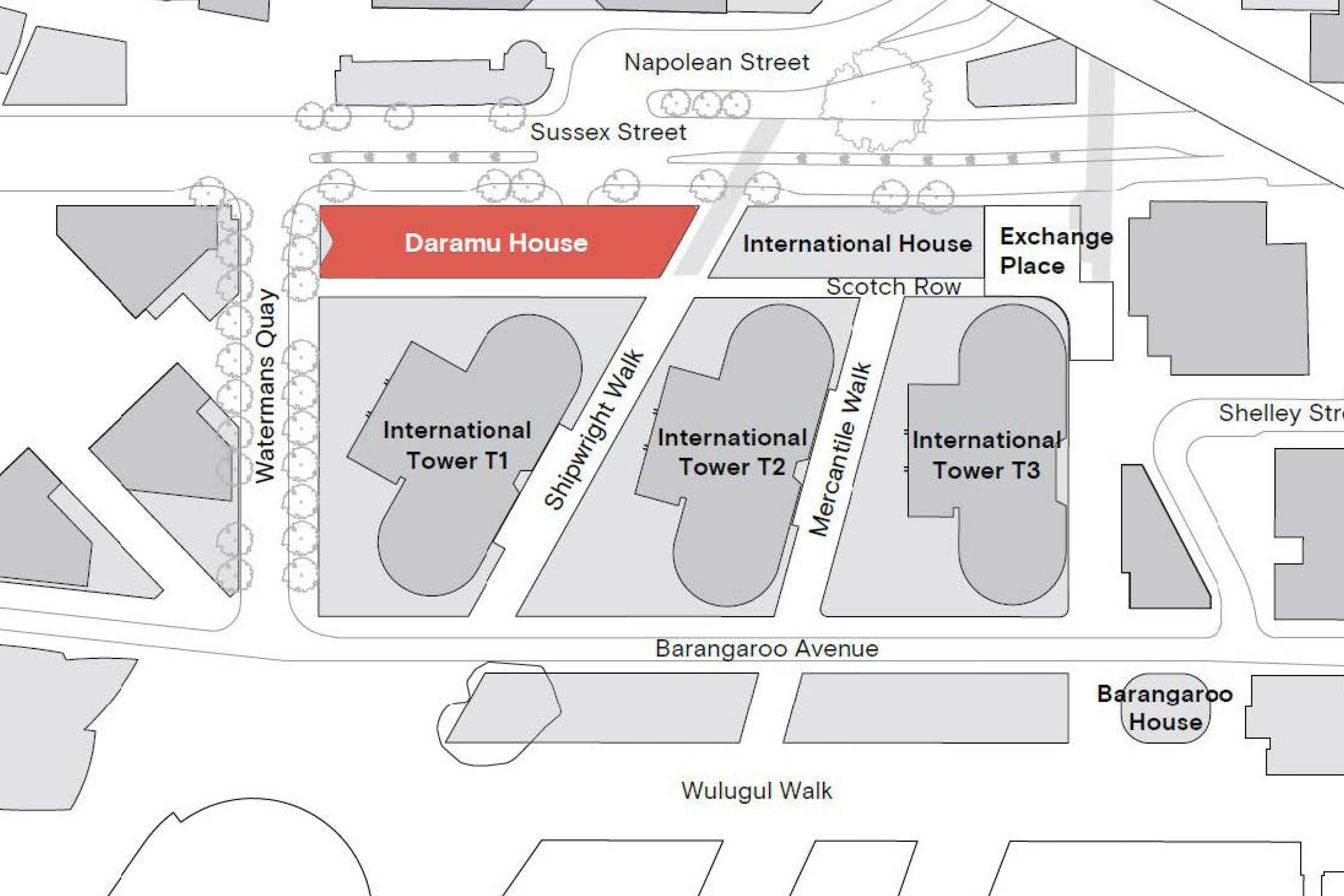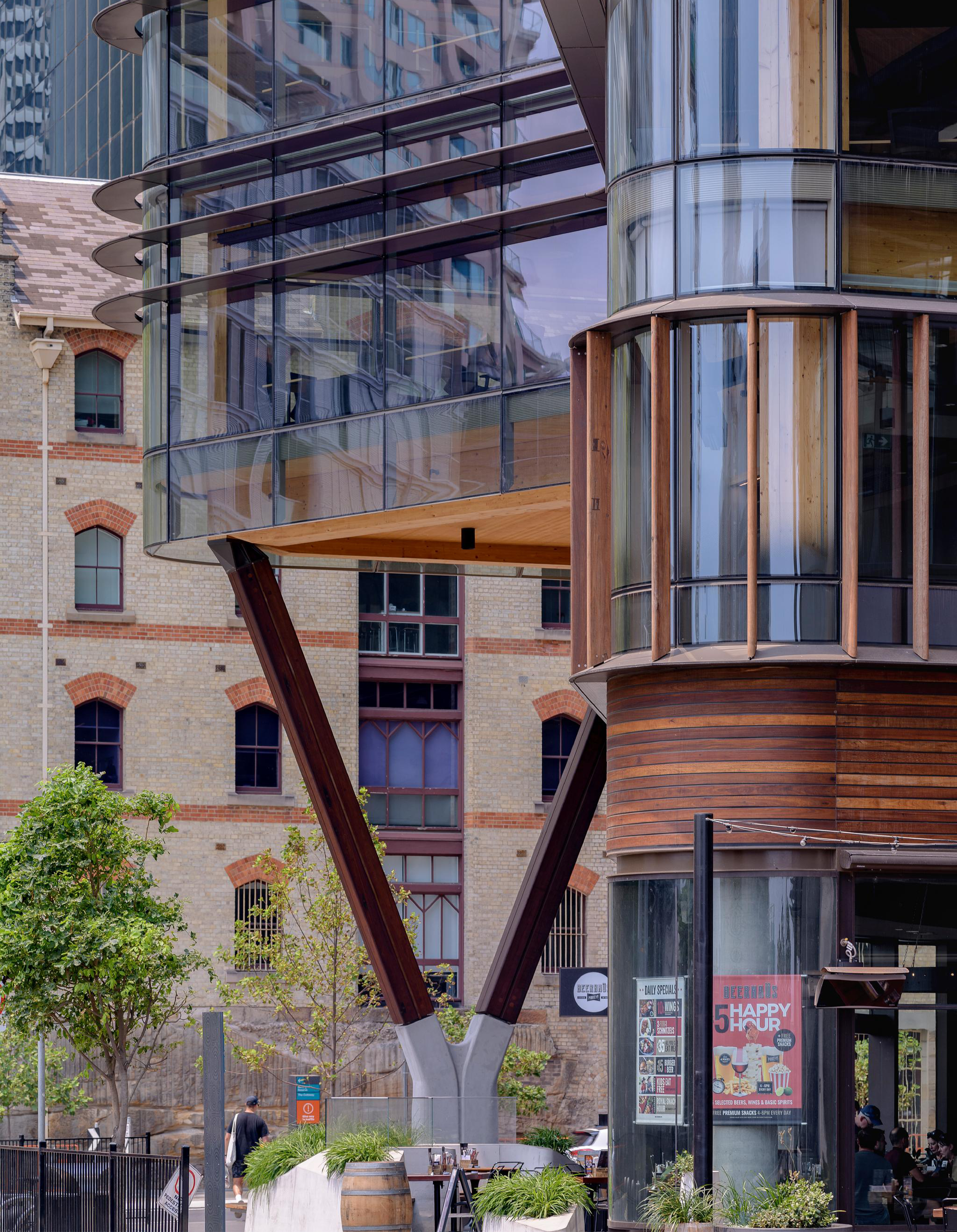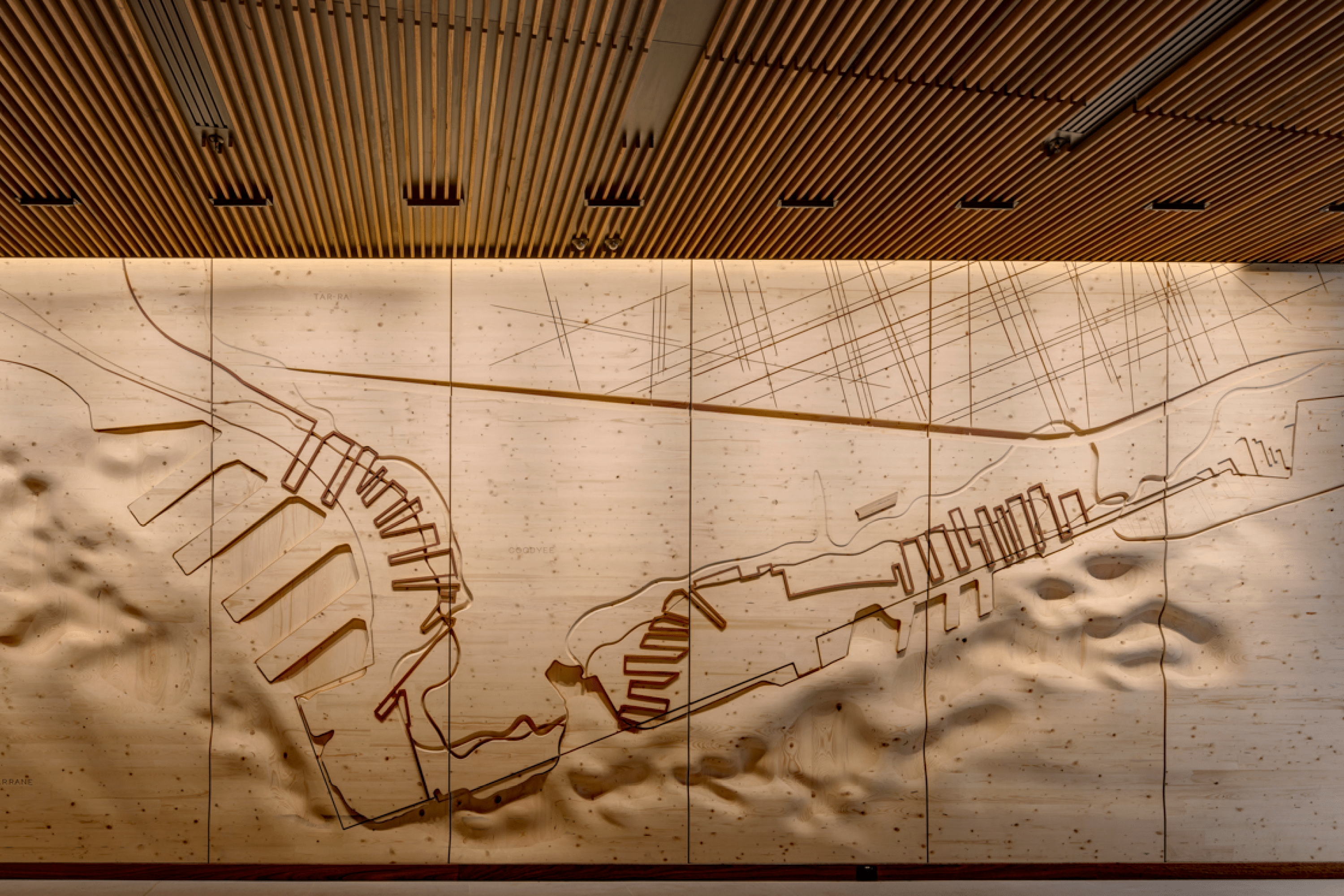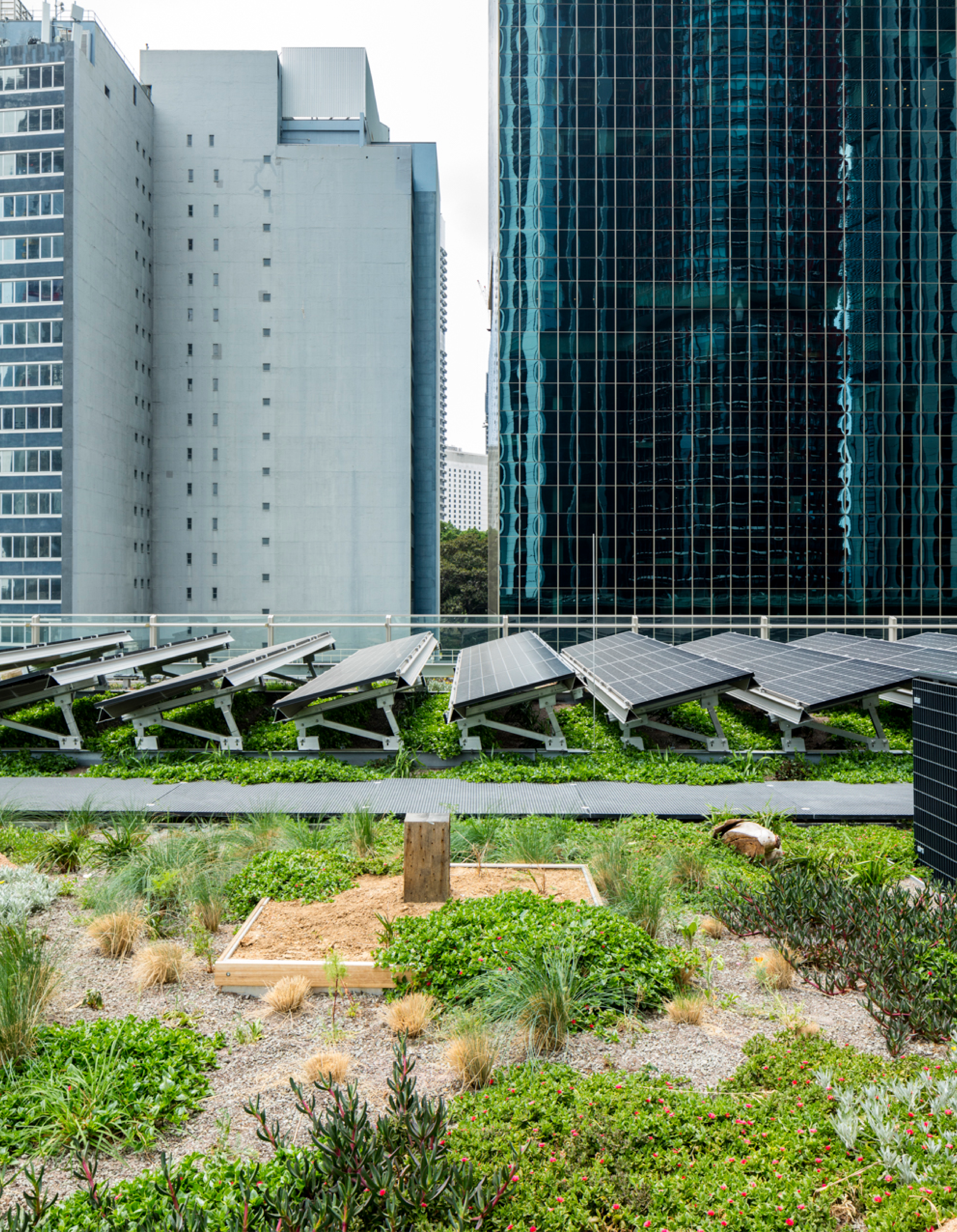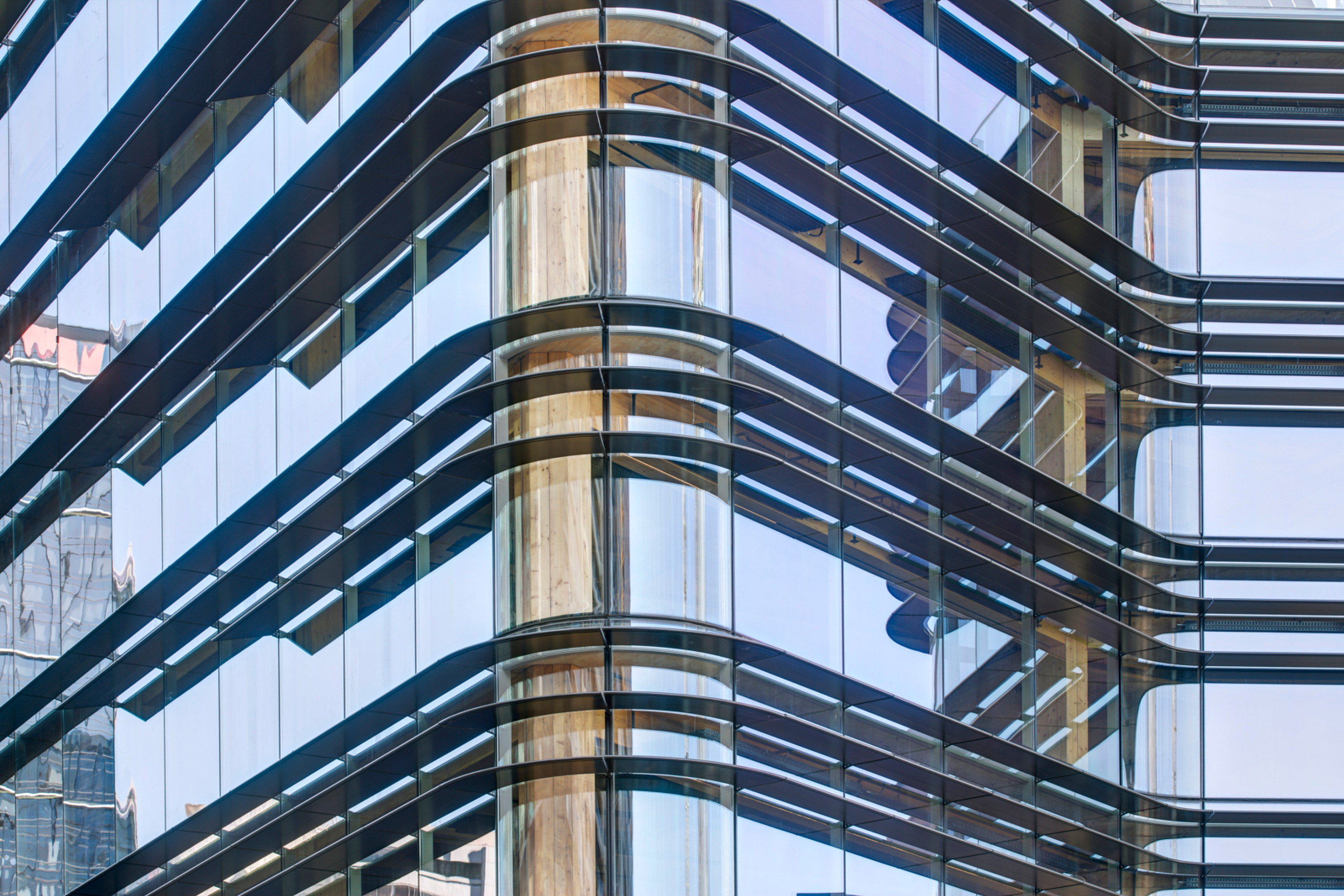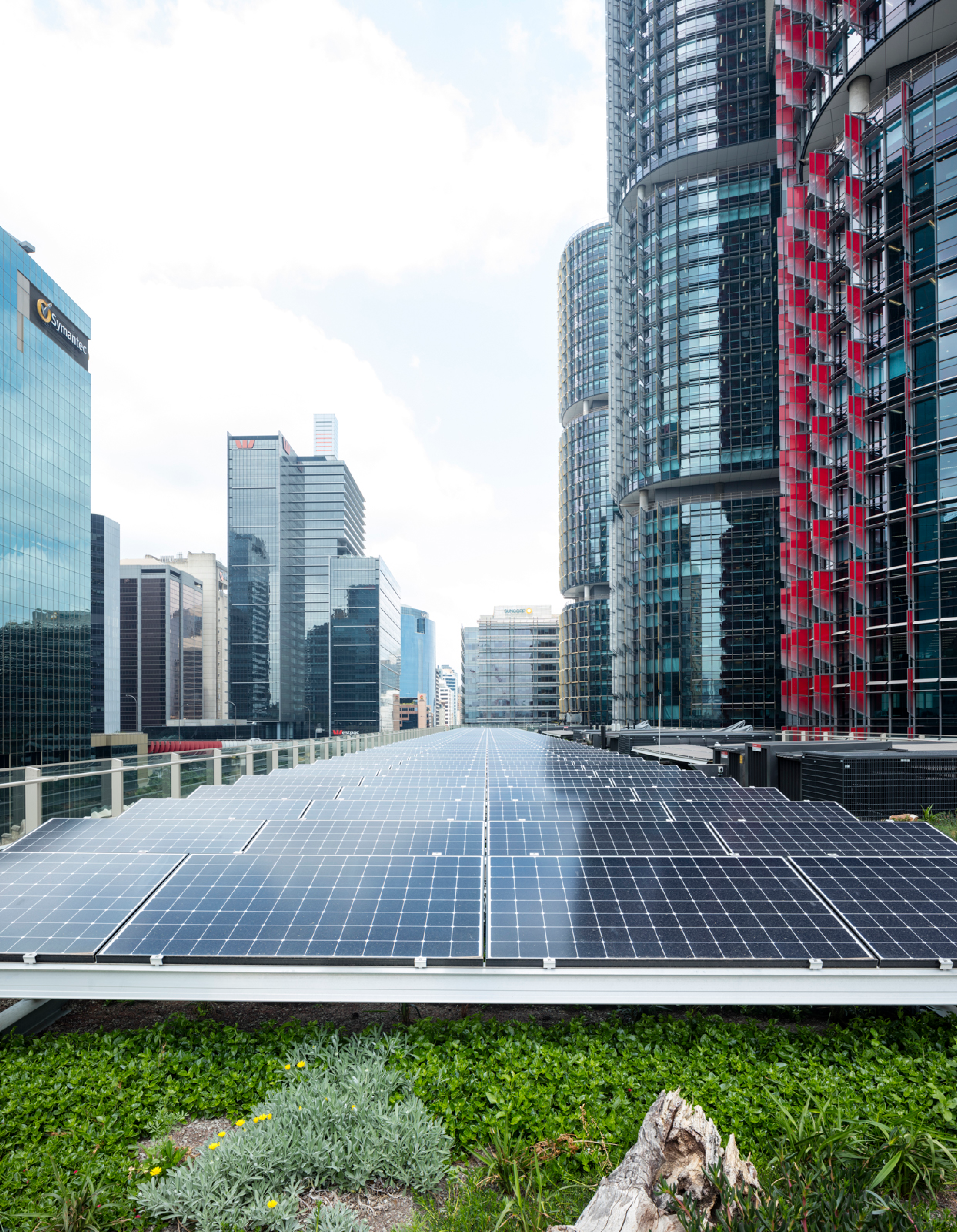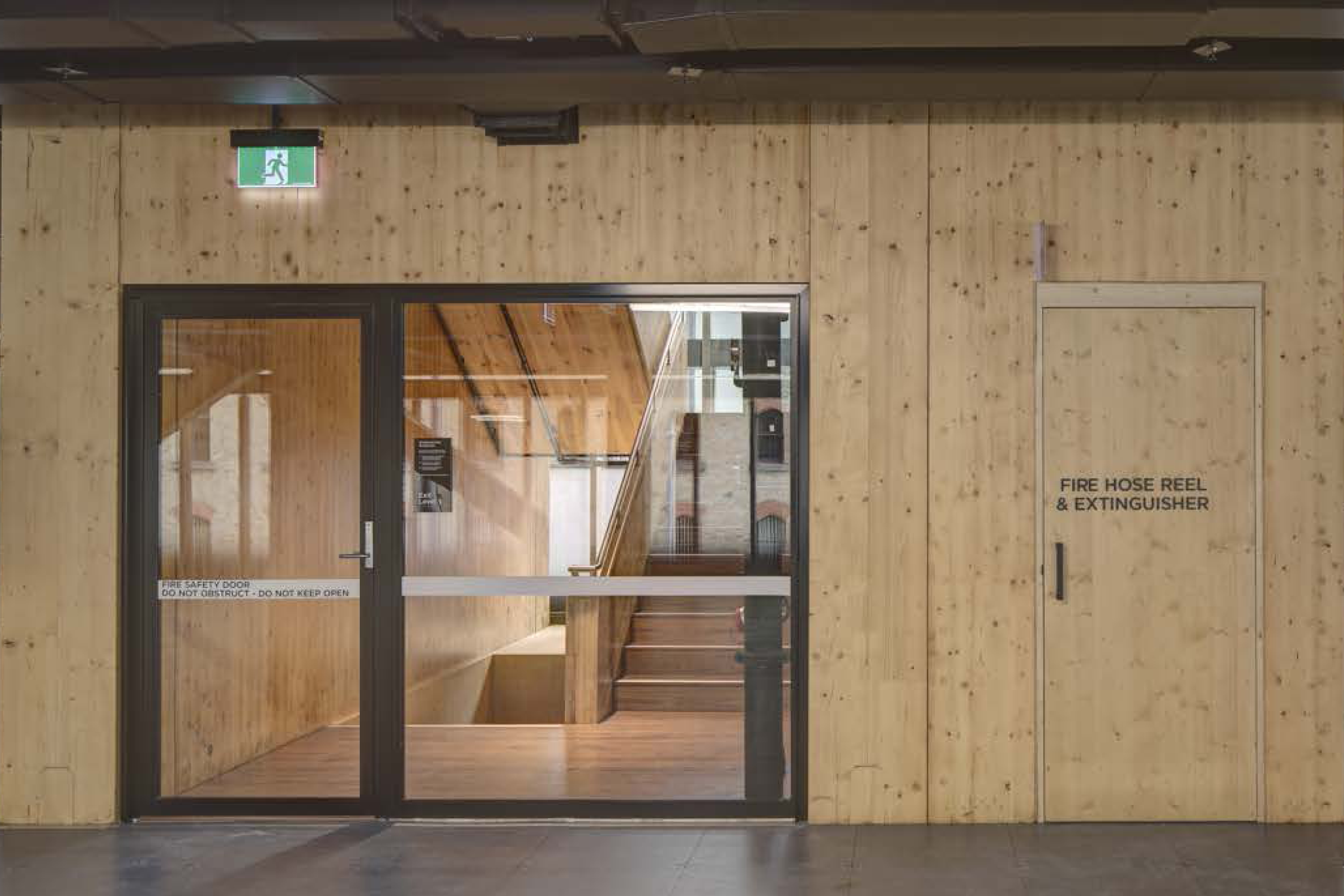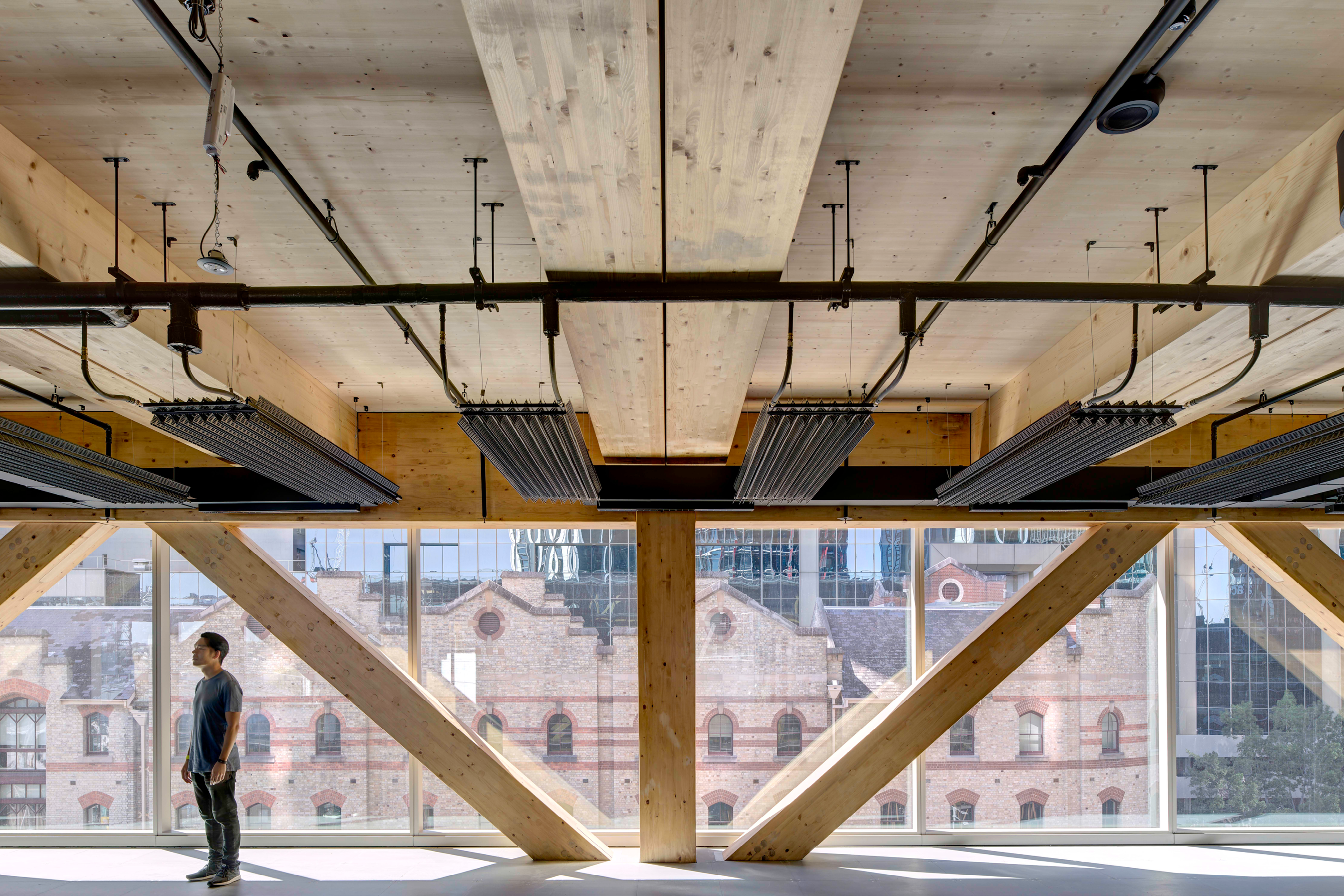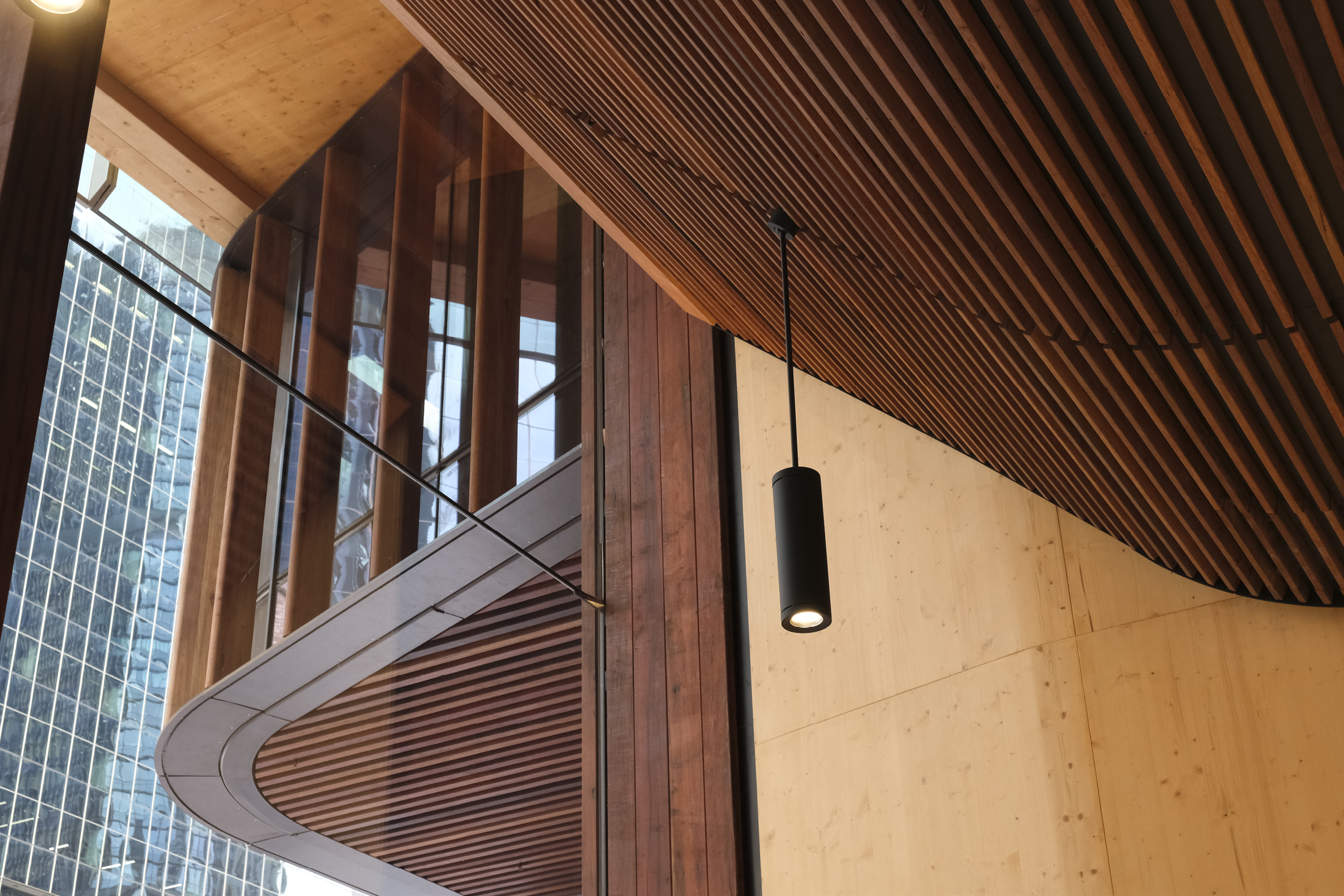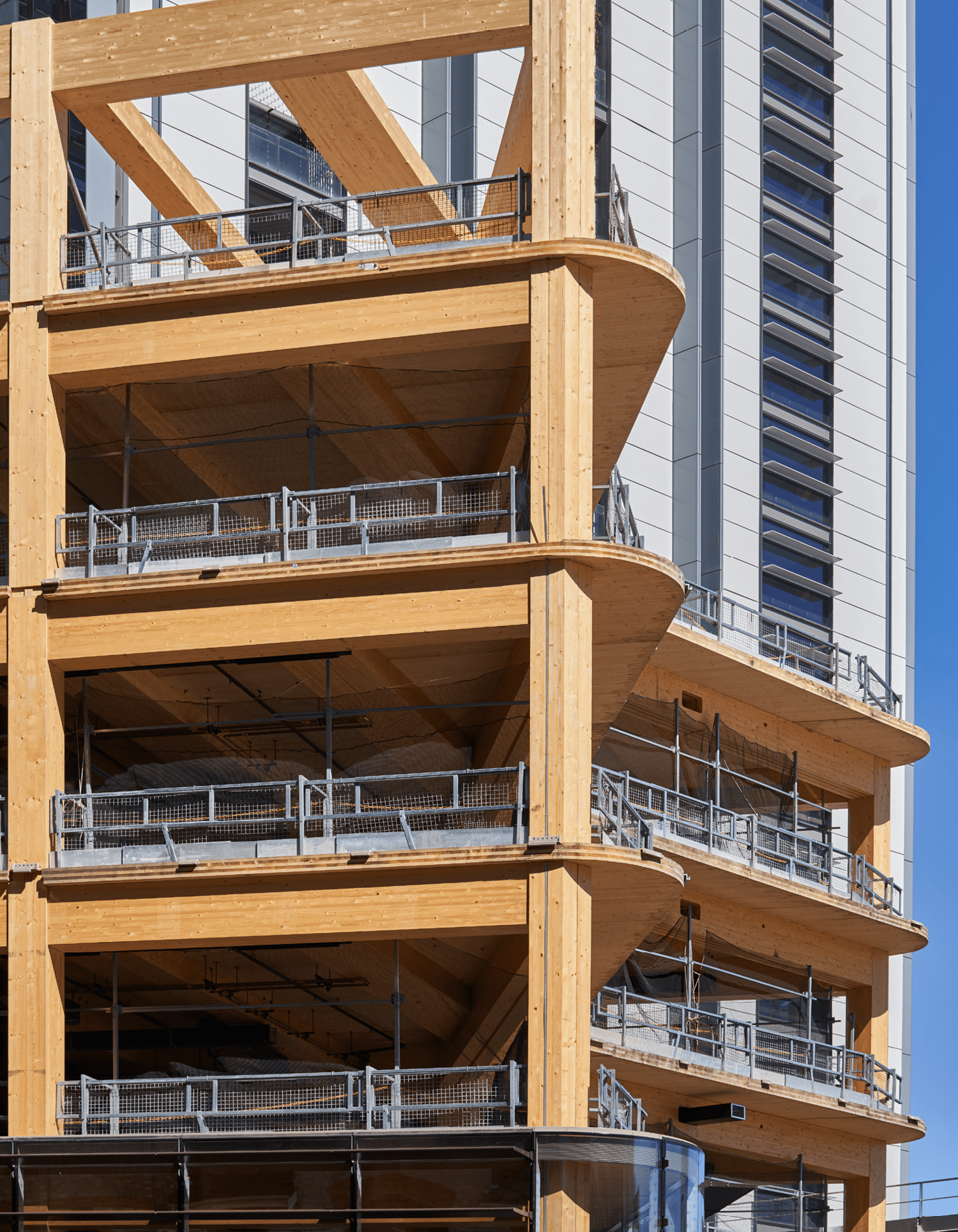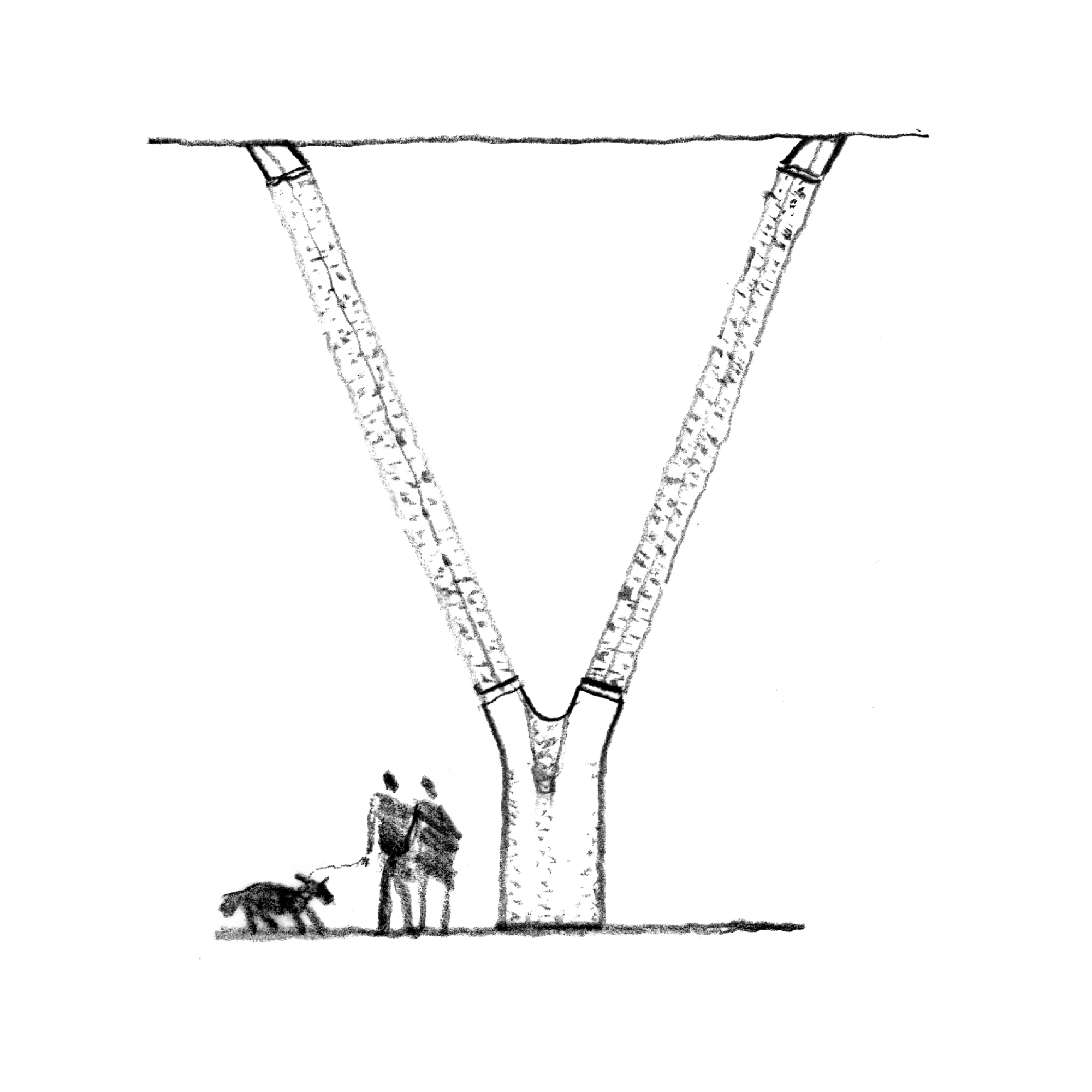Water
The Barangaroo development, within which Daramu House is located, incorporates a number of precinct-wide water saving measures that on sum allow the precinct to be water positive in operation, exporting more water than the drinking water that is imported. These measures include a centralised wastewater treatment plant which filters and treats black and grey water generated on site with the added ability to draw from the adjacent public sewer system. This processed water is then supplied back to the precinct public domain and buildings for non-potable uses such as irrigation and toilet flushing. Water storage tanks, situated within the precinct basement, capture stormwater from building rooftops and terraces as well as public domain run off to further supplement these uses.
Capitalising on the precinct’s proximity to the harbour, a district cooling plant uses pumped harbour water instead of mains water to reject heat from the building cooling systems, thereby removing one of the largest sources of water consumption in contemporary commercial construction (see also Energy).
The potable water usage of Daramu House is minimised through these precinct-wide measures. In addition, all fixtures within the base build wet areas are 4-star WELS rated.
The green roof of Daramu House incorporates predominantly low water use native species to minimise irrigation demand (See also Country above). A dedicated irrigation system is coupled with a proprietary soil medium to optimise water use. The green roof has been studied by a team of researchers from the University of Technology Sydney (Irga et al 2021) to determine its impact on the quality of stormwater run-off as well as the flow rate of water. Field observations demonstrated a significant reduction in soluble and insoluble copper entering the stormwater systems as well as a reduction in insoluble zinc and chromium. Stormwater flow rates were also shown to be dramatically reduced by the green roof during storm events when compared to a conventional roof.
Economy
Daramu House has demonstrated that mass timber is a viable commercial alternative to concrete. The costs for the supply of mass timber were slightly higher than concrete, but this cost was offset through other material minimisations (particularly elimination of internal wall and ceiling linings), simplification of construction, minimisation of site wastage, simplification of facade and benefits to the programme enabled through prefabrication and optimised staging (Figure 6).
The use of recycled Australian timbers throughout promotes local industry and material sourcing (see Country; Resources).
The City of Sydney awarded a research grant to Lendlease, Junglefy and the University of Technology Sydney to track the effectiveness of the green roof across four key areas: stormwater, renewable energy generation, thermal performance and local biodiversity. The positive results from this study (Irga et al 2021) provide a firm evidence base for the adoption of green roofs and urban landscaping in general but particularly in connection with a photovoltaic system. This could encourage the growth of associated industries within Sydney and other cities around the world that are at risk of rising urban heat, overwhelmed stormwater systems due to increased precipitation, suffer from poor biodiversity as well as those looking to maximise the efficiency of their renewable energy assets.


